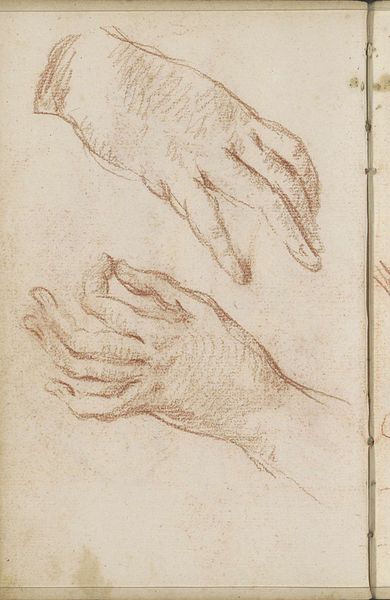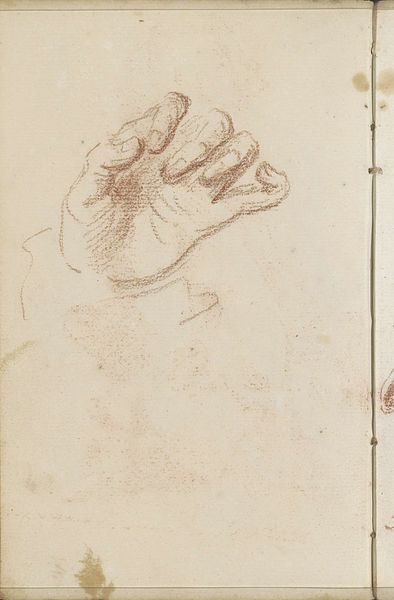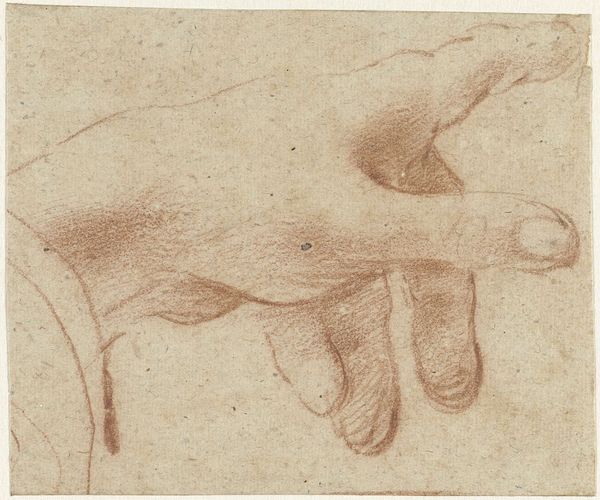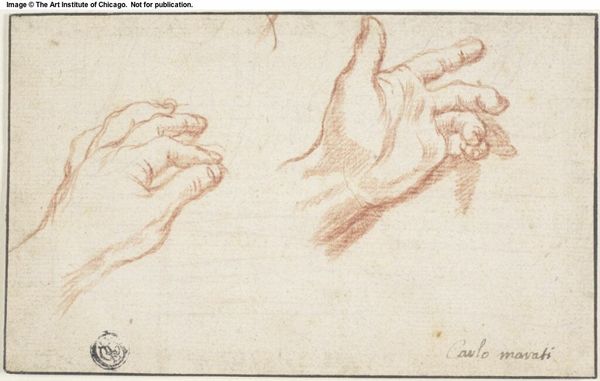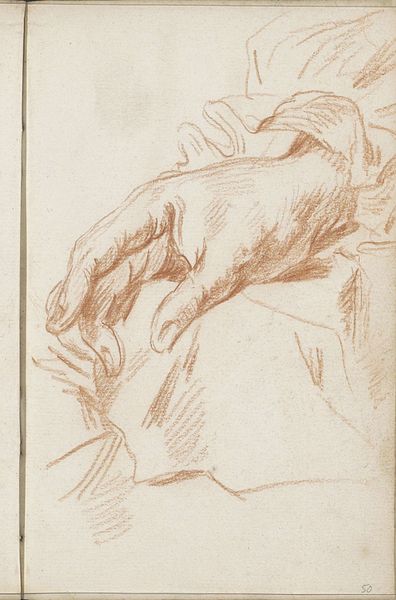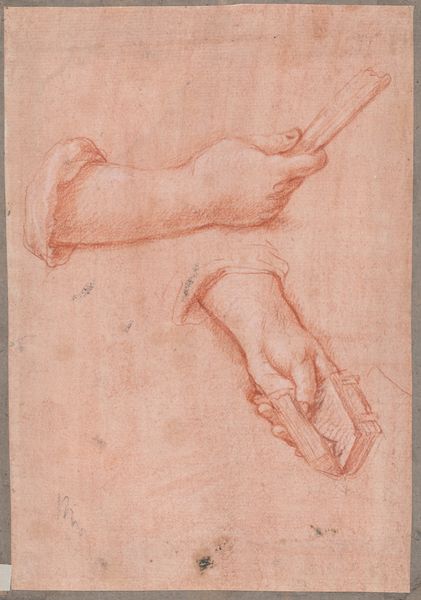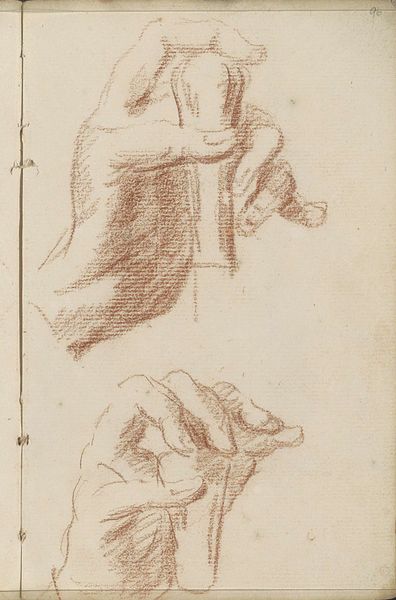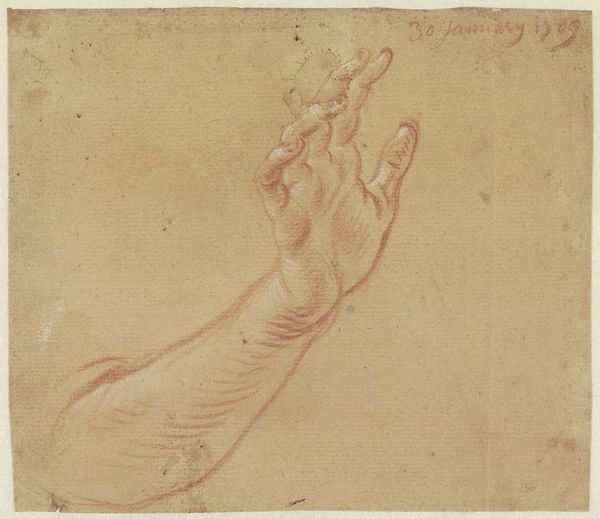
drawing, paper, pencil
#
portrait
#
drawing
#
baroque
#
pencil sketch
#
paper
#
pencil
#
watercolor
Copyright: Rijks Museum: Open Domain
This drawing, "Handpalm en vingers", was made by Petrus Johannes van Reysschoot, an artist born in Ghent during the early 18th century. During this time, artistic training often involved the study and replication of the human form, particularly the hand, as it was seen as a crucial element in conveying emotion and action. Here, Reysschoot sketches a hand and a face using sanguine chalk, a medium prized for its warm, lifelike quality. Notice how the hand is depicted in a somewhat tense, clenched position. The rendering hints at the body's potential for labor and expression. Simultaneously, the sketch of the face seems to emerge, ghostlike, below the hand. Is this the hand and face of a laborer? A serf? Reysschoot’s sketch speaks to the complex relationship between the body, identity, and representation during a period defined by rigid social hierarchies. It invites us to reflect on the untold stories held within each gesture and expression.
Comments
No comments
Be the first to comment and join the conversation on the ultimate creative platform.


